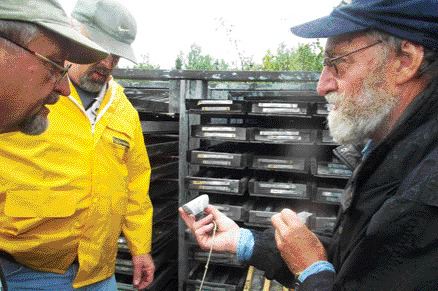Vancouver — A preliminary economic assessment evaluating production from Golden Band Resources’ (GBN-V, GBRIF-O) La Ronge gold belt projects, in northern Saskatchewan, has come back positive.
The scoping study, conducted on higher-grade portions of the Bingo, Komis, and EP gold deposits, considers a 4-year mining plan operating at about 700 tonnes per day to feed the company’s fully licensed Jolu mill.
The study only evaluated the potentially minable portions of the deposits based on preliminary economic criteria applied to the resource estimates.
Although the study indicated the project was likely to be economically viable, and could be brought into production quickly, it also found it would be very sensitive to metal prices, and somewhat sensitive to operating and capital costs.
The bulk of the “minable resource” sits within a modelled open pit at Komis with a measured and indicated resource of 601,000 tonnes grading 4.16 grams gold per tonne, about 80,500 contained ounces. A modelled pit at EP contains 24,000 measured and indicated tonnes at 6.4 grams gold, about 4,900 contained ounces. A cutoff grade of 1.96 grams gold was used in the open pit estimates.
At Bingo, the underground minable portion of the resource was calculated at 27,000 measured and indicated tonnes averaging 11.7 grams gold, or about 10,200 contained ounces, using an internal cutoff grade of 6.97 grams gold.
Initial capital costs were estimated at $17.1 million, including the leasing of major mining equipment, refurbishment and expansion of the Jolu mill to handle 700 tonnes per day, and surface infrastructure installations. The project has an estimated payback period of 2.2 years and could be in operation less than a year from inception.
The operation would generate a net pretax cash flow of $11.3 million, based on a 12-month trailing average price for gold of US$629 per oz., giving a pretax internal rate of return (IRR) of 24.9% and a pretax net present value (NPV) of $6.5 million at a 7% discount rate.
Total operating costs are estimated at $91.45 per tonne processed, or about US$464 per oz. of gold.
Golden Band feels the initial 4-year mine life reviewed in the study could receive a significant boost given the resource potential on its nearby projects that are currently being drilled and evaluated.
The Jolu mill is situated on the Waddy Lake land package, about 75 km by highway southwest of the Komis and EP deposits and about 55 km northeast of Bingo.
The company has also been busy on its winter drilling program on a number of its other La Ronge gold belt projects.
Recently released results from 20 holes at the Tower East deposit, the Phantom zone and Charlie’s Eye Crossing prospect delivered a number of significant gold-mineralized intervals.
Nine vertical holes completed on the northeast portion of Tower East were collared to determine whether a higher-grade starter pit could be defined on the land portion of the deposit.
Hole T-216 intersected almost 8 metres (from 24.7 metres depth) of 6.8 grams gold, including a 1.5-metre interval of 13.3 grams gold. A wide mineralized section was encountered in hole T-220 that cut 81 metres of 3.1 grams gold including several narrower, higher-grade sections.
Happy with its Tower East drill results, Golden Band plans to incorporate them into an updated resource model and estimate. The deposit has a current measured and indicated resource of 4.8 million tonnes grading 2.1 grams gold (318,600 contained ounces) plus an additional 568,000 inferred tonnes at 1.5 grams gold (27,200 contained ounces).
At the Phantom zone, where the company was testing for the source of a gold-in-till anomaly south of Tower Lake, four holes were drilled on the ice-covered western portion of Tower Lake. Intervals of up to 6 metres averaging 5.25 grams gold were encountered in mineralized quartz diorite and granodiorites.
Seven holes were drilled on Charlie’s Eye Crossing to delineate structural controls of the shallow, southerly dipping Charlie’s Eye breccia that forms a 3.2- to 5-metre-wide mineralized “tabular panel.” Intersections of up to 5 metres grading 4.4 grams gold were cored in hole CE-25.
Results from seven holes recently drilled on the Birch Crossing deposit were anticipated by the end of April.
Golden Band’s assembled land position contains more than 750 sq. km of the La Ronge gold belt and includes 10 gold deposits, four past-producing mines and the Jolu mill.
Given its 97.5 million shares outstanding, the company posts a $52-million market capitalization at its recent 53-per-share trading level. The stock has traded in a 52-week range of 27.5-68.


Be the first to comment on "Golden Band busy at La Ronge"